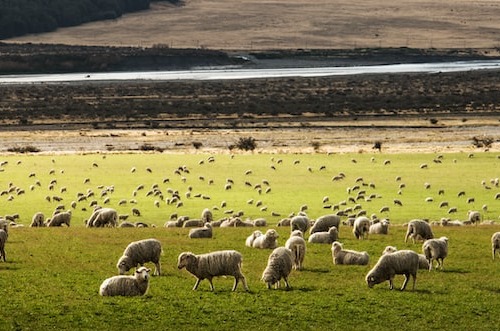
In W26 in the lamb and mutton landscape, Tridge’s analysis indicates that Australia's lamb industry registered a rise in slaughter rates, resulting in increased exports. From W1 to W25 of 2023, a record-breaking 9.2 million heads were slaughtered, an increase of 7% YoY. Favorable weather conditions and improved feed availability contributed to the industry's recovery, indicating positive growth. In Jan-23 to Apr-23, Australian lamb exports surged by 21% YoY to 180.86 thousand mt, with China surpassing the United States (US) as the largest importer of Australian lamb. Exports to China and the United Arab Emirates (UAE) significantly boosted overall Australian lamb export volumes. South Korea also experienced substantial growth, becoming the third-largest destination for Australian lamb. The China-Australia Free Trade Agreement (FTA) and the Korean FTA, which eliminated sheep meat tariffs, played a significant role in driving demand for Australian lamb. However, Australian lamb exports to the US declined by 22% YoY due to economic conditions impacting consumer spending. Despite higher export volumes, Australian lamb export values fell by 17% YoY to USD 991 million, primarily due to lower export prices. Nevertheless, the industry remains optimistic about meeting global demand and achieving higher export volumes in 2023, supported by increased national slaughter rates and upcoming events like Eid al-Adha and the Australia-United Kingdom (UK) FTA.
Across the Australian sheep market, indicators registered a significant easing in W26, accompanied by a decline in yardings, with a drop of 36% for sheep and 26% for lambs. The movement of older-season lambs led to a tightening supply of heavy lambs. This resulted in a USD 0.25 WoW decrease in hefty lamb prices, primarily due to price volatility at Wagga Wagga and reduced supermarket activity. Processors at sale yards become more selective, choosing only the best lambs with favorable weight and quality. While mutton prices also eased by USD 0.13 WoW, heavier sheep above 30kg maintained prices better than their lighter counterparts. Reduced demand from buyers is contributing to the pricing variance. Trade lamb prices eased by USD 0.17 WoW, and the market continues to prioritize quality and weight. Ballarat witnessed strong prices, with trade lambs trading at USD 3.93/kg carcass weight (cwt) in W26. Overall, the yardings through the indicator decreased by 10.24 thousand heads WoW. Sheep and lamb slaughter registered an increase following plant maintenance shutdowns, with sheep slaughter remaining significantly higher, up 58% YoY at 142.51 thousand heads, and lamb slaughter reaching 426.71 thousand heads.
In New Zealand, farmgate lamb prices experienced a decline in recent weeks, with a decrease of more than USD 1/kg compared to the same period in 2022. The price drop is attributed to several factors, including softer consumer sentiment leading to weaker global prices, an increase in inventory in key markets such as China, and competition from Australia. The AgriHQ lamb indicator fell USD 0.15/kg in the North Island and USD 0.05/kg in the South Island, with a further expected downside in W26. Companies are adjusting farmgate prices to align with declining export returns. Lamb prices in China, particularly for lamb flaps, registered a significant reduction, impacting various markets. While chilled lamb exports are still occurring, albeit in small volumes, and French rack prices in the US remain stable, overall consumer demand is low, inventories are building up, and competition from Australia is intensifying. Australian lamb exports have been especially prominent in the UK and Chinese markets. The weaker market outlook has also affected store prices, with declines observed in both the North and South Islands. Lastly, despite high expectations among farmers in the sheep trade in Ireland for increased demand during the Eid al-Adha festival, it turned out to be a disappointment. Irish Country Meats (ICM) describes the anticipated period as a non-event, attributing the lack of demand to increased numbers of UK sheep in the Irish market. Although YTD Irish sheep kill rose by 2% (23,272 heads), the expected surge in demand for sheep meat did not materialize. Factory demand for hoggets was low in W26, with Kildare Chilling providing no quote. ICM offered USD 7.41/kg for hoggets and USD 8.39/kg for spring lambs, while other outlets offered slightly higher prices. For ewes, prices ranged from USD 3.38/kg to USD 3.70/kg, depending on weight.



